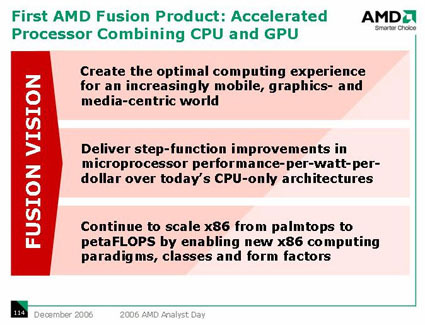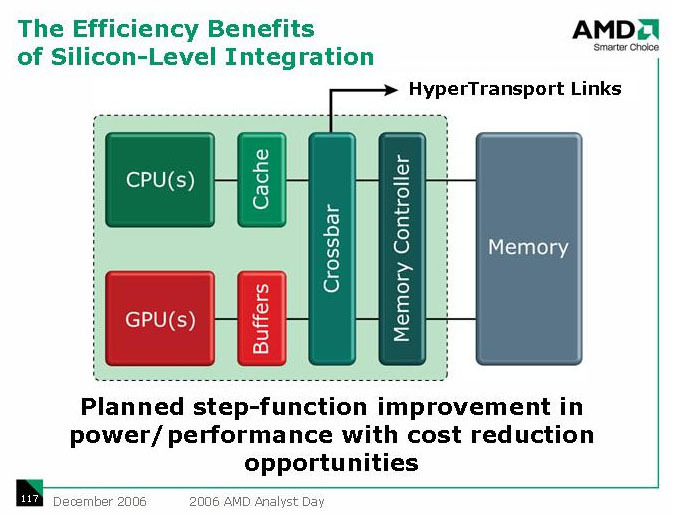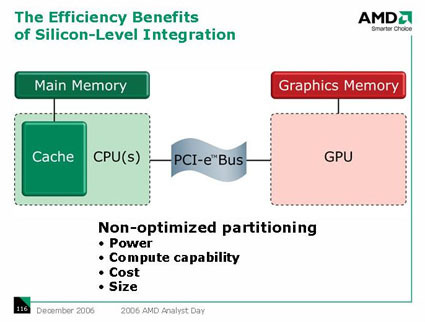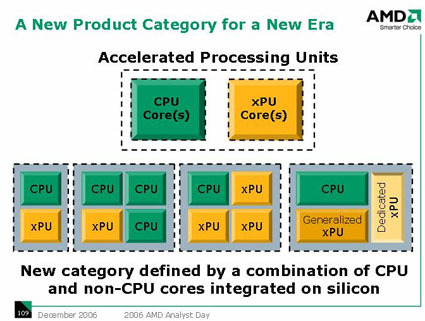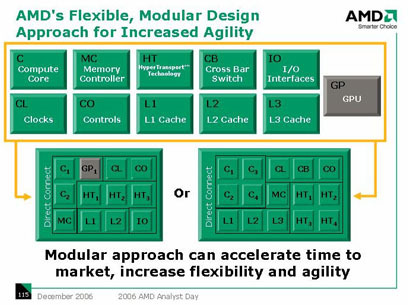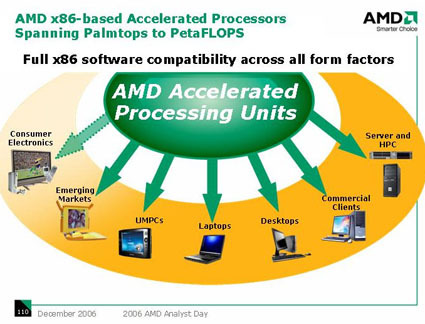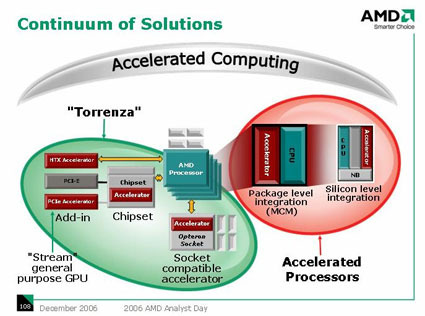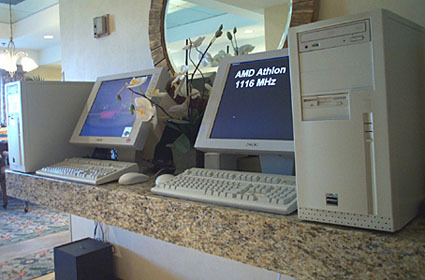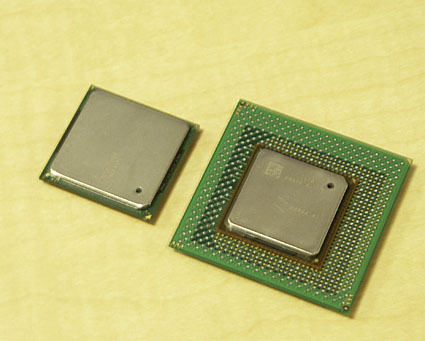AMD Fusion Processor
The general layout of the Fusion vision: Graphics integration and floating point enhancements.
The general layout of the Fusion vision : Graphics integration and floating point enhancements.
On a silicon level, this is how a first-generation Fusion processor, or APU, will look like.
On a silicon level, this is how a first-generation Fusion processor, or APU, will look like.
Today's CPU/GPU layout, which according to AMD, has not only to deal with bandwidth bottlenecks, but will also not be able to match Fusion cost, size and power-efficiency.
Today’s CPU/GPU layout, which according to AMD, has not only to deal with bandwidth bottlenecks, but will also not be able to match Fusion cost, size and power-efficiency.
On a more granular level, APUs can be compared to a box of building blocks that enables AMD to create specialized processors.
On a more granular level, APUs can be compared to a box of building blocks that enables AMD to create specialized processors.
Modular design approach of Fusion.
Modular design approach of Fusion.
AMD sees APUs penetrating every market segment of computing devices.
AMD sees APUs penetrating every market segment of computing devices.
In a sense, you could see APUs as an extension of the "Torrenza" idea. However, Torrenza is not expected to go away when APUs will be available.
In a sense, you could see APUs as an extension of the "Torrenza" idea. However, Torrenza is not expected to go away when APUs will be available.
Get Tom's Hardware's best news and in-depth reviews, straight to your inbox.
The gigahertz race was a mistake, and a multi-core race could be similarly wrong, AMD says. This is an AMD marketing flyer from 2000, which was one of the first initiatives of the company that tried to establish a trend that differed from Intel's directio
The gigahertz race was a mistake, and a multi-core race could be similarly wrong, AMD says. This is an AMD marketing flyer from 2000, which was one of the first initiatives of the company that tried to establish a trend that differed from Intel’s directio
AMD says it has learned its lesson from the Gigahertz race and will skip out of the multi-core race early/ If you remember, though, AMD was first to take the 1 GHz hurdle back in 1999. The first PC that was clocked above 1 GHz was this 1.16 GHz Athlon PC.
AMD says it has learned its lesson from the Gigahertz race and will skip out of the multi-core race early/ If you remember, though, AMD was first to take the 1 GHz hurdle back in 1999. The first PC that was clocked above 1 GHz was this 1.16 GHz Athlon PC.
Of course, beyond 1 GHz it was Intel that dominated clock speeds with its Pentium 4 processor that was released in November 2000. Pictured here are the Pentium 4 with first-generation "Willamette" core (right) and the "Northwood" upgrade.
Of course, beyond 1 GHz it was Intel that dominated clock speeds with its Pentium 4 processor that was released in November 2000. Pictured here are the Pentium 4 with first-generation "Willamette" core (right) and the "Northwood" upgrade.
Around 2000/2001, processor manufacturers started to think more seriously about power consumption. This round at the 2001 Microprocessor Forum was one of the more memorable panels that included (from left to right) AMD CTO Fred Weber, Transmeta CTO David
Around 2000/2001, processor manufacturers started to think more seriously about power consumption. This round at the 2001 Microprocessor Forum was one of the more memorable panels that included (from left to right) AMD CTO Fred Weber, Transmeta CTO David
Tom's Hardware is the leading destination for hardcore computer enthusiasts. We cover everything from processors to 3D printers, single-board computers, SSDs and high-end gaming rigs, empowering readers to make the most of the tech they love, keep up on the latest developments and buy the right gear. Our staff has more than 100 years of combined experience covering news, solving tech problems and reviewing components and systems.
